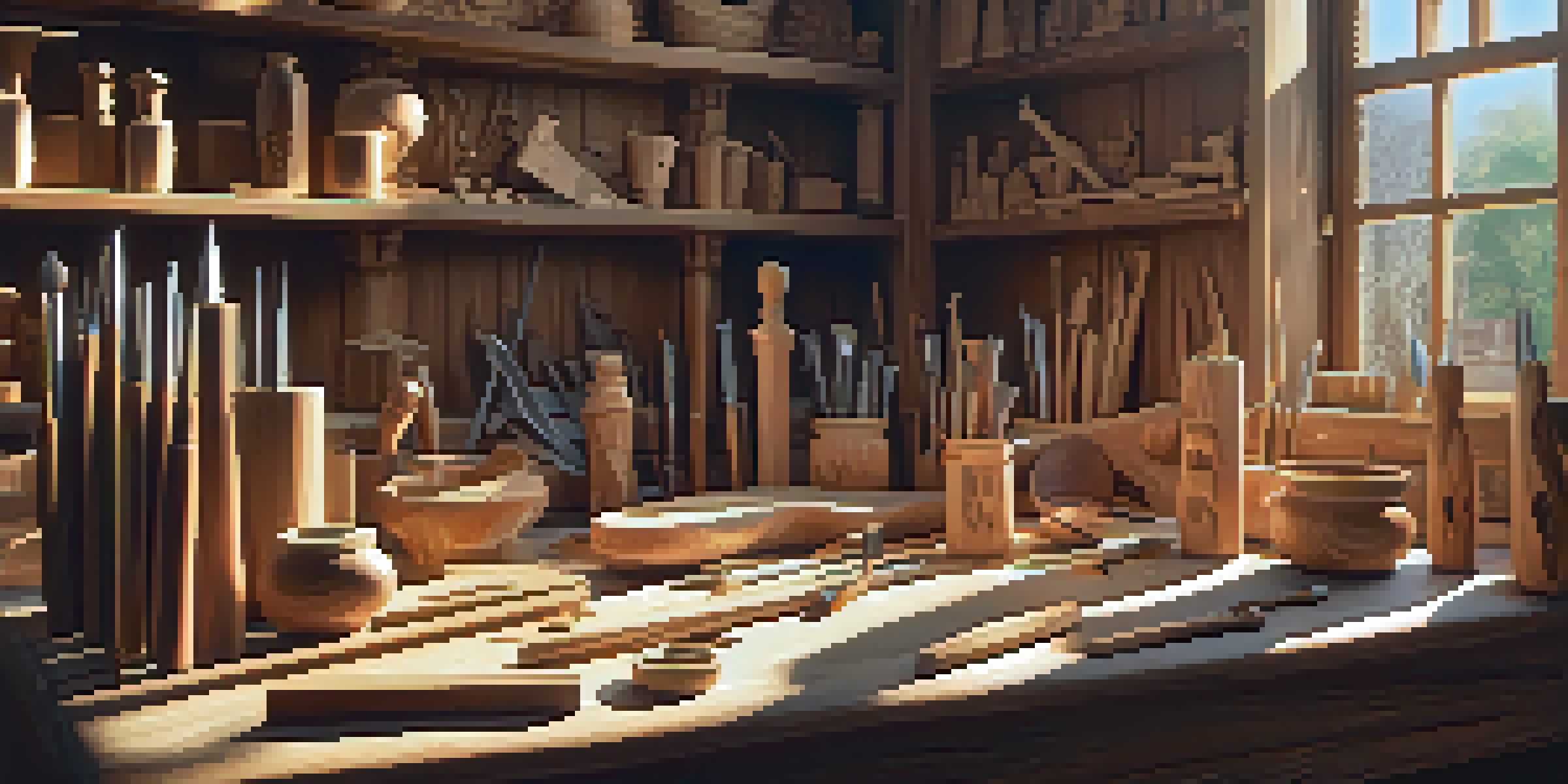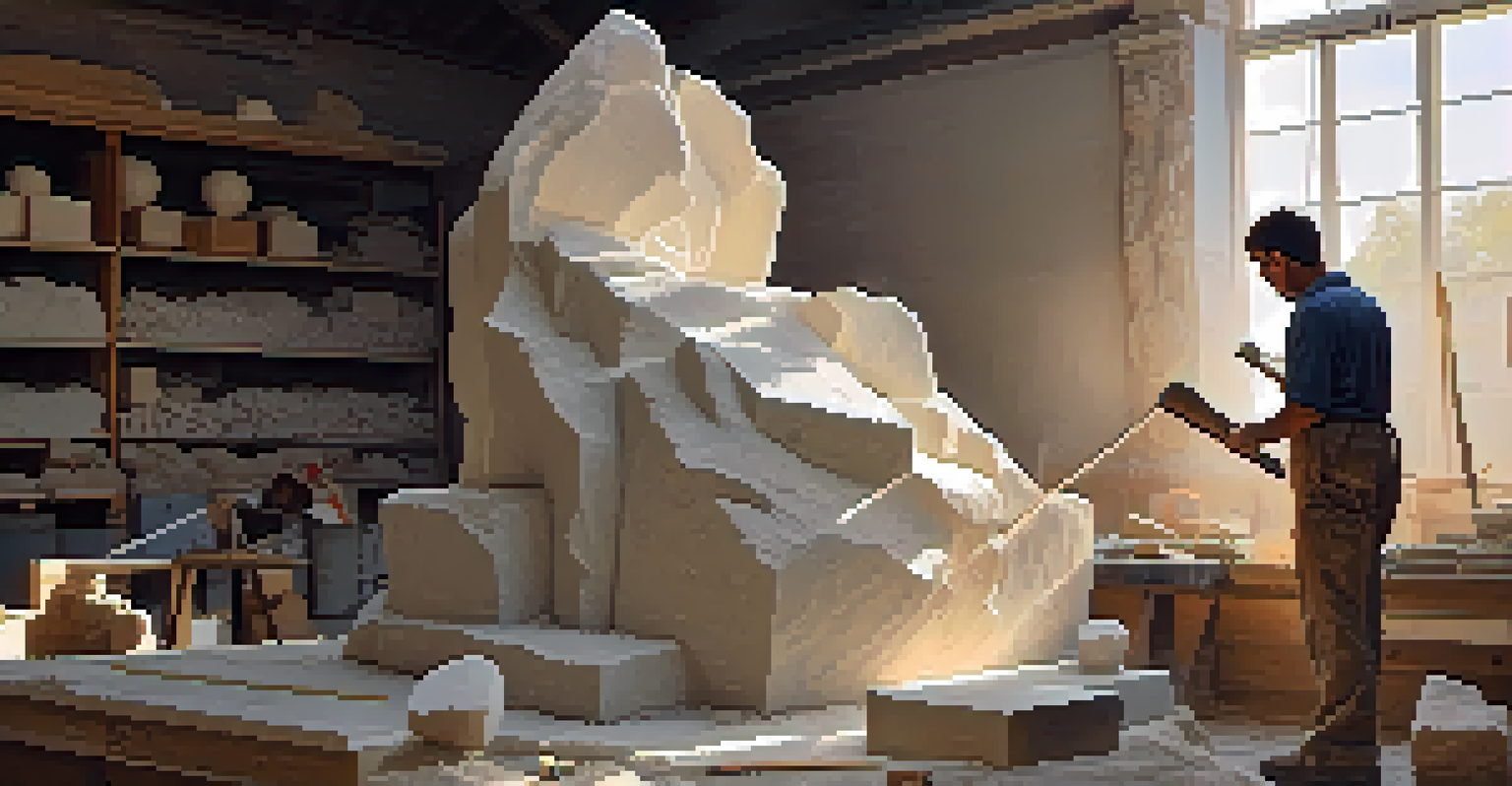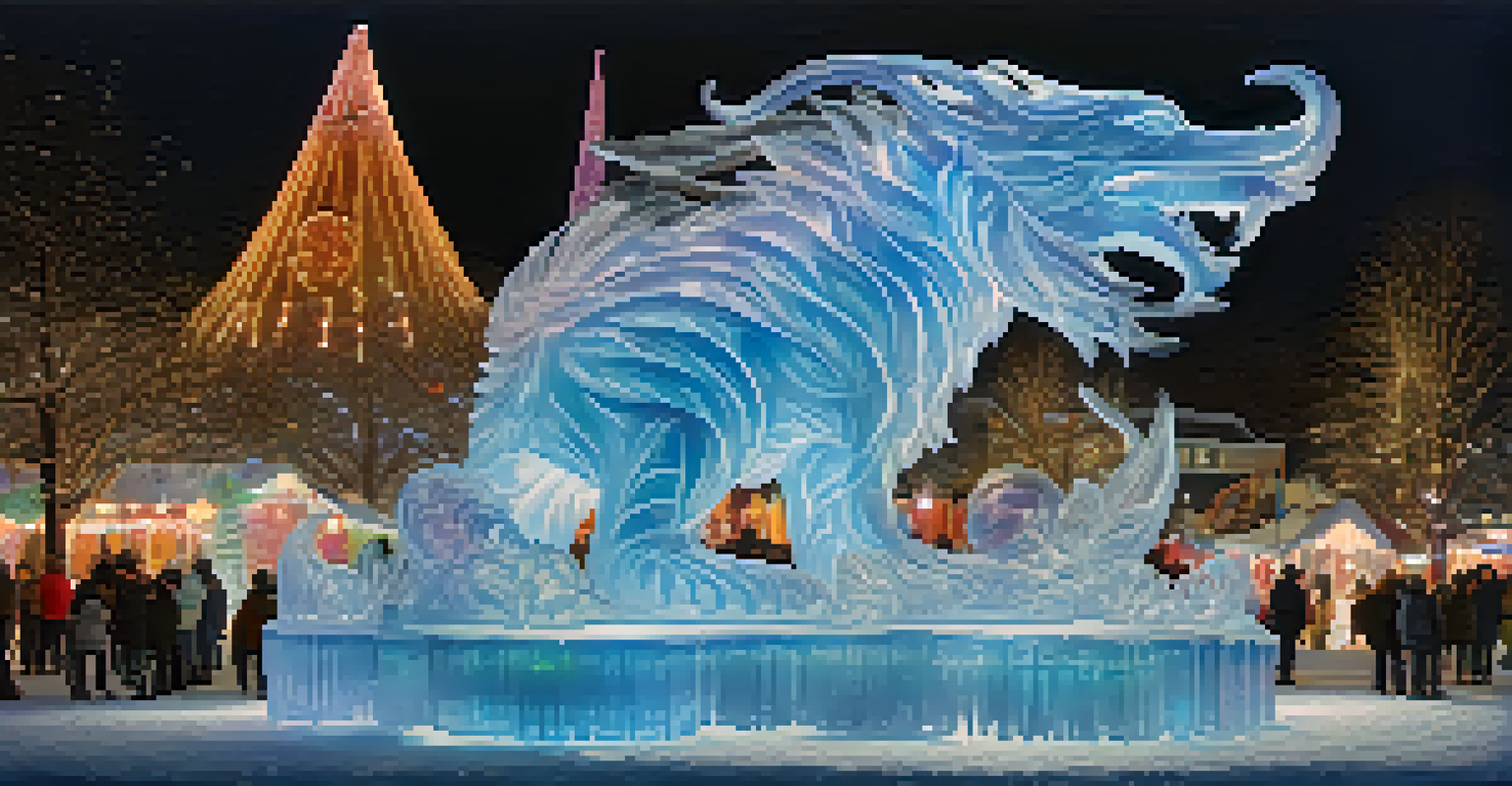Carving Techniques: From Traditional to Contemporary Styles

Understanding Carving: A Brief Overview of Techniques
Carving is an ancient art form that transforms solid materials into intricate designs. It involves removing material from a block or surface to create a desired shape or figure. This skill can be applied to various mediums, including wood, stone, and ice, each offering unique challenges and rewards.
Every artist dips his brush in his own soul, and paints his own nature into his pictures.
Traditionally, carving techniques were passed down through generations, often tied to cultural significance. From the detailed woodwork of indigenous tribes to the elegant marble sculptures of the Renaissance, each technique tells a story. It’s fascinating how these age-old methods still inspire contemporary artists today.
As we explore carving techniques, it's essential to recognize the evolution from traditional practices to modern adaptations. This journey not only showcases the craftsmanship involved but also highlights how artistic expression continues to evolve over time.
Traditional Wood Carving: Techniques and Styles
Wood carving is one of the oldest forms of carving, rich with history and cultural significance. Techniques like chip carving, relief carving, and whittling have been beloved by artisans for centuries. Each method involves a unique approach, whether it’s creating flat patterns with chip carving or crafting three-dimensional figures with relief carving.

Artists often use specific tools, such as chisels and gouges, to achieve their desired results. The choice of wood also plays a crucial role, as different species offer varying textures and colors. For instance, softer woods like pine are easier to carve, while hardwoods like oak present more challenges but yield stunning results.
Carving Techniques Evolve Over Time
Carving has transformed from ancient techniques to contemporary practices, showcasing the blend of tradition and innovation.
Traditional wood carving not only emphasizes skill but also celebrates the connection between the artist and nature. By using natural materials, wood carvers create pieces that reflect the beauty of the environment, making each creation a testament to both artistry and craftsmanship.
Stone Carving: The Art of Sculpture
Stone carving is a timeless craft that transforms raw stone into magnificent sculptures. Artists use tools like chisels and hammers to chip away at the stone, revealing intricate details and forms. This process requires immense patience and precision, as mistakes can be challenging to correct.
Art is not freedom from discipline, but disciplined freedom.
The beauty of stone carving lies not only in the final product but also in the journey of creation. Each strike of the chisel contributes to a piece that can last for centuries, often becoming a part of public spaces or historical landmarks. Think of Michelangelo’s David; it’s a stunning example of how stone can be transformed into a lifelike figure.
Modern stone carving has expanded to include new tools and techniques, allowing artists to push the boundaries of their craft. This blend of tradition and innovation creates a dynamic and exciting field that continues to inspire both artists and admirers alike.
Ice Carving: A Temporary Yet Captivating Art
Ice carving is a unique art form that combines creativity with the fleeting nature of ice. Artists typically use chainsaws and chisels to sculpt intricate designs that can dazzle audiences. The ephemeral quality of ice makes each piece a temporary masterpiece, often showcased at events like weddings or festivals.
One of the fascinating aspects of ice carving is the challenge of working against time. As temperatures rise, the ice begins to melt, adding a sense of urgency to the creative process. This time constraint often leads to spontaneous and innovative designs, showcasing the artist's adaptability.
Diverse Mediums Enhance Artistic Expression
Artists use various materials such as wood, stone, and ice to create intricate designs, each presenting unique challenges and rewards.
Despite its temporary nature, ice carving has gained popularity in recent years, especially in competitive settings. Carvers often push the limits of their skills, creating breathtaking sculptures that capture the imagination, even if only for a short time.
Contemporary Carving: Blending Techniques and Styles
Contemporary carving embraces a diverse range of styles and techniques, often blending traditional methods with modern influences. Artists today experiment with new materials, such as plastics and metals, allowing for innovative expressions that diverge from historical norms. This fusion creates a vibrant scene that attracts both traditionalists and modernists.
One notable trend is the incorporation of technology in carving. CNC machines and laser cutters enable precise designs that would be challenging to achieve by hand. While some purists may argue this detracts from the craft, many artists see it as an opportunity to explore uncharted territory.
Contemporary carving also encourages collaboration across disciplines, merging sculpture with painting, photography, and even performance art. This dynamic interplay not only enriches the artistic community but also invites audiences to engage with carving in entirely new ways.
Tools of the Trade: Essential Equipment for Carvers
No matter the carving medium, having the right tools is crucial for success. For wood carving, basic tools might include knives, chisels, and gouges, each designed for specific tasks. Similarly, stone carvers rely on chisels, hammers, and other specialized equipment to achieve detailed results.
In recent years, many artists have begun incorporating power tools into their work. For example, rotary tools can speed up the process and allow for intricate detailing, while still requiring a skilled hand to control. It's fascinating to see how tools evolve, yet the core principles of carving remain unchanged.
Technology Shapes the Future of Carving
Modern tools and techniques, including CNC machines and mixed media, are redefining carving, allowing for new forms of artistic expression.
Investing in quality tools is essential for any aspiring carver. Not only do good tools enhance the creative process, but they also ensure safety and precision. Whether a beginner or a seasoned professional, having the right equipment can make all the difference in bringing artistic visions to life.
The Future of Carving: Trends and Innovations
As we look to the future, the world of carving continues to evolve, driven by technological advancements and changing artistic trends. Artists are increasingly experimenting with mixed media, combining traditional carving with digital elements like 3D printing or augmented reality. This fusion opens up exciting possibilities for both creators and audiences.
Sustainability is also becoming a key focus in the carving community. Many artists are now sourcing eco-friendly materials or repurposing discarded items to create their works. This shift not only promotes environmental awareness but also adds a layer of depth and meaning to the finished pieces.

As carving techniques and technologies continue to develop, one thing remains clear: the spirit of creativity and expression will always be at the heart of this art form. Whether through traditional methods or contemporary innovations, carving will continue to inspire future generations of artists and enthusiasts alike.